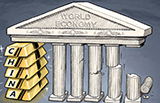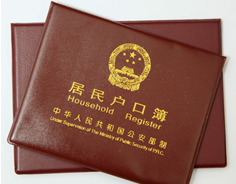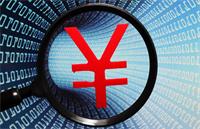China enters key phase to avoid middle income trap
[2015-10-29 09:15]China is set to avoid the middle income trap in the next five to ten years as innovation and structural adjustment will create new fundamentals to support medium-to-high speed growth.
A market-oriented way of financial reform
[2015-10-28 07:27]Therefore, the interest rate liberalization stresses a market-oriented way of reform. It is also a tool of macroeconomic management.
Forging a new paradigm of agricultural cooperation
[2015-10-27 12:58]China and its Belt and Road partner countries are presented with historical opportunities to forge a new paradigm of agricultural cooperation.
Economic fundamentals still sound
[2015-10-27 10:04]The fundamentals are sound for China's economy to continue its transition to the new sustainable engines of economic growth.
Benefits of hukou reform outweigh costs
[2015-10-27 08:09]As the end of the 12th Five-Year Plan period approaches and the 13th is about to begin, the old hukou system is increasingly hindering the further development of the nation.
Progress on pollution but still much to do
[2015-10-27 08:09]The root cause of the prevailing extreme air pollution is that the industrial development was put before environmental protection in parts of China.
Where will China go in the next five years?
[2015-10-26 20:16]Chinese Communist Party will hold a vital meeting in Beijing from October 26 to October 29, at which the development roadmap for China from 2016 to 2020 will be discussed, namely China's 13th Five-Year Plan.
Understanding China's 'around 7 percent' growth target
[2015-10-26 13:37]For those obsessing over China's annual growth target of around 7 percent, the 6.9-percent expansion during the third quarter was a disappointment.
Next five-year plan should restrict coal use
[2015-10-26 07:33]In its next five-year plan, the government should resort to energy restriction, particularly of coal, in order to press ahead with the transformation of the economic structure.
Shining lights brighten future of SOEs
[2015-10-23 07:29]While the need for SOE reform is great and too many SOEs still fight to maintain the troubled status quo, there are also some Chinese SOEs leading by example.
Shining lights brighten future of SOEs
[2015-10-23 07:29]While the need for SOE reform is great and too many SOEs still fight to maintain the troubled status quo, there are also some Chinese SOEs leading by example.
Opinion: Five steps needed to boost security of online finance
[2015-10-22 07:33]It is more than necessary to promote the ability to defend financial security during the 13th Five-Year Plan (2016-20) period.



